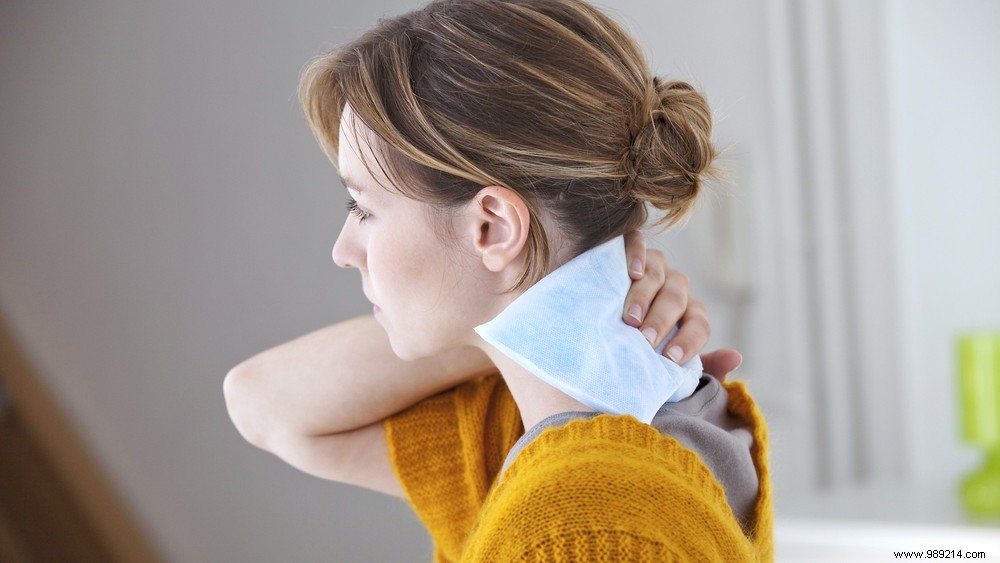
Fever, bruising, cramping. Do you know when to cool and when to choose a hot water bottle?
Suppose you fell and your muscles hurt. Do you put a bag of frozen peas on it or do you seek relief with a hot water bottle? Cold and heat can both help reduce pain, so deciding what to do can be confusing. Something to remember:cold is generally used for pain due to swelling or inflammation due to injury. Heat has a relaxing effect and is better for muscle pain or a chronic ailment.
If pain is hammering through your head, cold and heat can both provide relief. There are different types of headaches associated with migraines. To relieve migraines, it's important to find out whether it's comfortable for you to keep your head cool or warm. Migraines can sometimes cause tension pain in your neck muscles. In that case, it is best to choose heat to improve blood circulation and ensure relaxation.
If you suffer from swollen ankles and tired legs, you may have vascular problems. Vascular problems are caused by blood not flowing properly through your veins and this causes complaints such as heavy legs and ankles that feel tired. A cold shower can improve blood circulation. Your vessels are 'scared' by the cold water and contract, pushing your blood forward. This temporarily raises your blood pressure and your legs get a boost of new energy.
During intensive exercise, more lactic acid than blood and oxygen sometimes goes to your muscles. The accumulation of lactic acid causes muscle pain. This will pass thanks to protein you get from food, but until then sore muscles can feel annoying. A massage helps to warm the painful area and stimulate blood flow. The improved blood circulation pushes the lactic acid away and this relaxes your muscles and the muscle pain disappears. In this case, massaging helps better than a hot pack, the heat does not penetrate far enough.
When you have a wound, your skin tissue is damaged. This can cause swelling, pain and redness and the injury can also feel warm because the tissue is (a little) inflamed. This painful swelling is your body's natural response to injury. Cold can numb this injury:it narrows your blood vessels so that less blood flows to the wound. Just think of white fingers in the cold. Cold can reduce blood and fluid buildup in the affected area, putting less pressure on the wound and reducing swelling.
You don't have to exercise hard to get cramps. Even in your sleep you can get cramps. Normally, not all the fibers in your muscles are active at the same time. With a cramp, a mistake occurs in this process and all the fibers in your muscles in a certain area contract at the same time. This is because your nerves are sending too many signals to the muscles that contract. Causes of cramps are, for example, sudden cold, oxygen deficiency or magnesium deficiency. Stretching the cramped muscle works best, a massage can also provide relief.
Cold helps to numb the mucous membranes, so that you feel less pain. Take, for example, a glass of cold water with ice cubes. Avoid cold fruits, ice creams and fruit juices because they are acidic and can irritate your sore throat.
Read also: 5 tips to soothe a sore throat
You may experience joint pain if you have lifted heavy or if your body is overloaded after exercise. Heat is the best solution for joints that are not inflamed. You can relax your joints and muscles by taking a warm bath or placing a hot water bottle on the painful joint. But be aware:if the joint is red and warm to the touch, the best way to relieve the pain is with cold. The red skin can indicate inflammation and heat can actually make inflammation worse.
After an accident with boiling water, fire or a corrosive substance, you will have a burn on your skin in no time. First water, the rest comes later, according to the Burns Foundation. But what temperature should this flowing water actually be? Lukewarm water is best. So don't be fooled by using ice cold water. This means you cannot keep up with the minimum cooling time of five to ten minutes and you may even experience hypothermia.
When you're sick, you prefer to curl up in bed all day. You may be tempted to curl up under an extra thick duvet, but you don't have to. Under fluffier bedding, your body can get back to the right temperature more easily. Are you cold and shivering? Then you can temporarily use a somewhat thicker blanket.